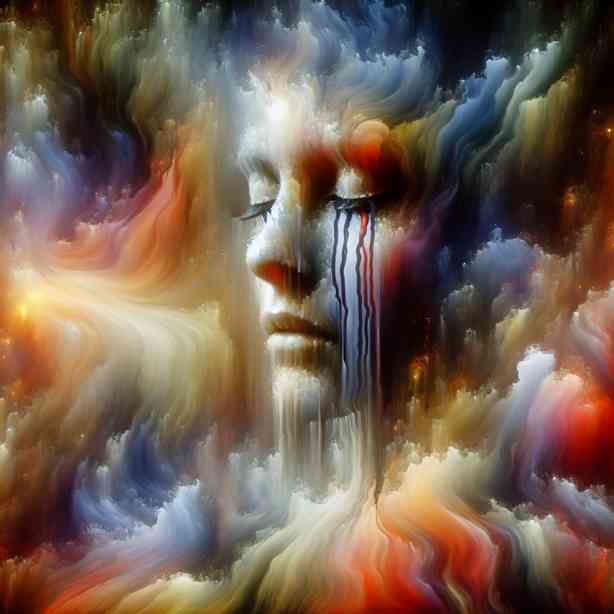
Music has a unique ability to touch our hearts and evoke emotions that words alone often cannot express. Among the countless melodies and harmonies that exist, there are those that resonate deeply with our personal experiences, illuminating our joys, sorrows, and everything in between. The Harmony That Made You Cry speaks to this profound connection between music and emotion, a subject rich with depth and resonance that many individuals can relate to.
What is it about a particular piece of music that stirs our emotions so deeply? Many factors come into play, such as melody, harmony, rhythm, and the powerful stories told through lyrics. When a piece encapsulates our feelings or experiences, it can feel as if the composer has reached into our very soul to articulate what we have struggled to express. Consider, for instance, a piece of music associated with a significant life event. It can transport us back in time, triggering memories and feelings associated with that moment.
The harmonies within a song hold immense power. They create an atmosphere that can elevate the listener’s mood, evoke nostalgia, or even stir sadness. Minor chords, for example, often evoke feelings of melancholy, while major chords typically suggest happiness or triumph. The interplay of these harmonies can propel a message or feeling in a way that mere words cannot. When combined with lyrics that resonate personally, this creates an experience that can lead to tears, whether they be of joy or sorrow, catharsis or nostalgia.
One of the most significant examples of this powerful connection is found in the realm of film scores. Composers like Hans Zimmer and John Williams have mastered the art of using harmony to enhance a film’s emotional impact. Take for instance the score from “Titanic,” which features harmonies that not only serve to underscore the narrative but also to encapsulate the profound sense of loss and longing present in the story. The melodies linger long after the film ends, reminding us of the characters’ fates while invoking our own emotions regarding love and loss.
Furthermore, the cultural context in which music exists cannot be understated. Different cultures have distinct musical traditions that express their unique experiences and emotions. For instance, the sorrowful strains of a traditional Irish lament can resonate deeply with themes of loss and longing, while the rhythms of West African drum music may express communal joy and celebration. As such, our individual backgrounds play a significant role in how we perceive and react to music. A song that evokes tears in one person may bring joy to another, depending on their personal experiences and cultural associations.
Moreover, the lyrics accompanying a melody can significantly enhance its emotional impact. Songwriters like Adele and Ed Sheeran have gained acclaim for their powerful storytelling through music. Songs such as “Someone Like You” and “Photograph” draw on personal experiences of heartbreak, love, and nostalgia, artfully crafted to resonate with listeners who have experienced similar emotions. In this sense, the lyrics act as a bridge between the music and the listener’s personal narrative, allowing the harmony to evoke an emotional response that may lead to tears.
The phenomenon of music-induced tears is often rooted in a process known as “frisson.” This physiological response occurs when music elicits a strong emotional reaction, leading to shivers or tears. Frisson is often triggered by contrasts within music—such as sudden changes in dynamics, tempo, or key—capturing the listener’s attention and drawing them into an emotional experience. It is fascinating how a well-placed crescendo or a soft diminuendo can lead us to sob uncontrollably, as if the music speaks directly to our innermost feelings.
In addition to personal experiences, societal dynamics play a significant role in shaping our emotional responses to music. During times of collective grief or celebration, music serves as both a comfort and a rallying point. National anthems sung at moments of triumph or during times of tragedy can evoke a profound sense of unity and shared emotion. History is replete with examples where music has helped people process grief, rebellion, and joy, demonstrating the collective strength that can arise from shared harmonic experiences.
The psychological aspect of music and emotions is also worth exploring. Research has shown that music activates brain regions associated with emotion, memory, and even physical movement. Understanding this connection sheds light on why certain songs can provoke tears, as they may unlock deeply buried memories or feelings associated with past experiences. The act of remembering, facilitated by harmony, can be cathartic, allowing individuals to feel, grieve, or celebrate through music.
As we navigate through our lives, music remains a steadfast companion, offering solace during our lowest moments and elation during our highest. The Harmony That Made You Cry captures this enduring relationship between music and the human experience. Each individual’s connection to music is unique, shaped by personal narratives, cultural backgrounds, and emotional landscapes.
In closing, the emotional power of music, particularly the harmonies that resonate within our hearts, underscores the universal truths of human experience. For many, a piece of music embodies life’s most profound emotions—those moments of joy, sorrow, love, and loss. Our tears, whether they stem from laughter or sadness, connect us to a wider narrative of humanity, emphasizing the importance of music in our lives. As we continue to explore and appreciate the rich tapestry of melodies around us, let us discover those harmonies that stir our souls, reminding us of what it means to be truly human.


